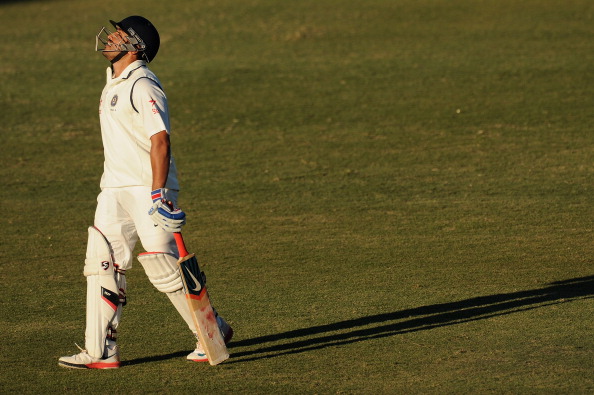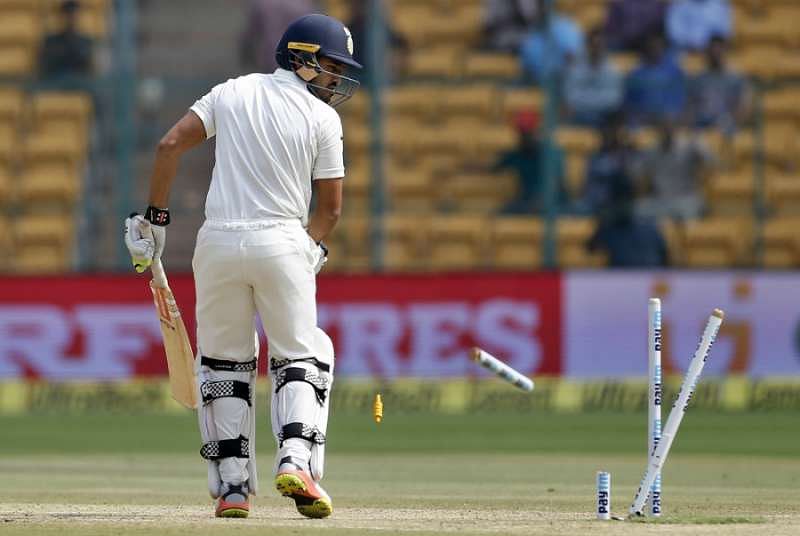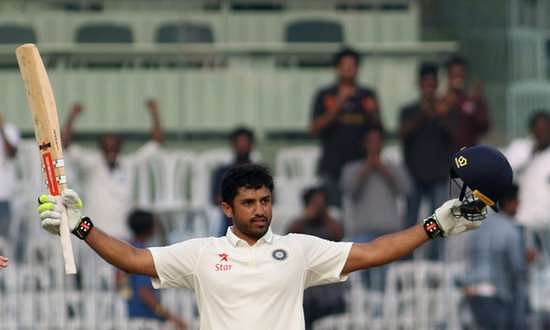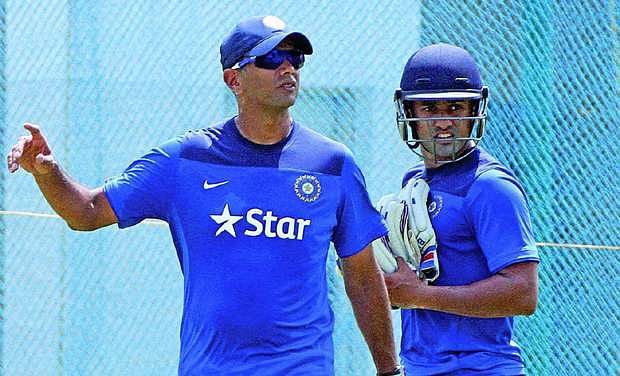
From a flyer into the mire: What's next for Karun Nair?
Karun Nair might have already played his best innings for India.
Those unbeaten three hundred and three runs made him a sensational headline in December last year, but it also catapulted him to a pedestal that was too good to be true for a 25-year-old with the international experience of just two Tests.
Mitchell Starc’s blinding yorker, in the very next Test at Bengaluru, did not just dismantle his woodwork, it must have done his confidence some major damage.
His forlorn face after the dismissal was that of a troubled man, a man raided by the IT department after winning a sketchy lottery.

It was a far cry from the Nair who was pounding the English attack just weeks ago, cutting, slashing and driving them all around the park. There was a wry smile on his face when one of his streaky drives caught a heavy edge and flew through the slips, it felt as if he had luck in his pocket and was proudly aware of it.
The same luck deserted him in the next three games as he was suddenly yanked out of his dream. ‘Welcome to the real world, it sucks’, you could almost hear Courtney Cox as Monica Geller, belting out that one-liner all over again.
No. 6 is a very tricky batting position in Tests. Sydney Gregory’s 201 (a score etched in memory courtesy his countryman Gillespie), around 110 years ago, was the first century ever at that spot, the first three-figure mark at No. 6, the first in 42 Test matches.
Garfield Sobers was a sensation at No. 6, Asad Shafiq has been in extremely good nick too, scoring nine centuries in that spot, the most by any batsman ever, one more than the West Indian great, who averaged close to 54 at that spot.
Nair got to bat at No. 6, for it is difficult to accommodate him anywhere else: after the openers, Cheteshwar Pujara, Virat Kohli and Ajinkya Rahane, in their respective batting spots, are immovable, at least for now.
Also read: Karun Nair regrets failing for India at the wrong time
The man who has been given the go ahead of Nair for the Sri Lanka tour is Rohit Sharma, who has a penchant for interspersing mammoth scores with mediocre knocks.
Rohit also got his first break at No. 6, and happily responded with two centuries in his debut Test, averaging 288 after the game. His fans sported wide grins: the much-awaited Test debut had taken the right course, and he looked destined for a long run.
He garnered just two fifty-plus scores in the next 19 innings: but the management decided to persist with him, waiting for the ODI ‘hitman’ to fire in Tests as well.
Before he finally hit form against New Zealand last year, his previous 15 Test innings had also seen him manage just two fifty-plus scores. If Rohit can get such a long run at 30, why not Nair, five years younger to him, and just as ‘talented’ as a young Rohit was?
When Nair misfired against Australia, he lost his touch, carrying his poor run into the IPL in the subsequent months. What made matters worse for him was having to deal with Delhi Daredevils’ captaincy, handed to him at an awkwardly wrong time.
Nair admitted himself that he should have scored against Australia, sounding like a man burdened by his own expectations and left ruing his inability to get going when he actually had to.

At such a juncture, a spot for Nair on the boat to Sri Lanka could have motivated the youngster to get his mojo back. There can’t be something suddenly wrong with his game, it is more of a mental block, a troubled time for any batsman, when the ball appears hazy and the mind doesn’t match the limbs.
The selectors seem to have taken more steps backward than ahead: recalling players like Yuvraj Singh, Parthiv Patel and Gautam Gambhir over their younger potential competitors.
Imagine if a young Virat Kohli was dropped after failing to perform in his first few Test innings in 2011. Nair still has a triple century on his resume to show. Even Pujara and Rahane, now deeply rooted in the Indian middle order, were persisted with despite temporary losses of form.
Nair is a precocious talent, one that has to be dealt with carefully. Even if the selectors want him to go back to domestic cricket and return to his groove, they need to plan it carefully and let him be in the know.
He might have had a slice of luck accompanying him, but he is one of only two Indians to have reached the triple century mark in 80 years of Tests. Perhaps you are not expected to score a triple century at No. 6. Perhaps Nair did more than he ought to have, and then got less than he deserved.
Let’s not just go into the ‘triple-century’ sentiment: he was assured against the pacers, used his feet extremely well against the spinners, and looked composed throughout, even when he was surpassing decades-old Test records and making Virender Sehwag sit back somewhere and smile.

Next week, when Kohli and his troops fly down to Sri Lanka, Nair will travel with the junior team to South Africa, the country where Rohit Sharma first stole the limelight in the inaugural World T20 a decade back.
His most difficult test could have already arrived, as an inexplicable trough has succeeded a jaw-dropping high, a substantial challenge for even the most established of batsmen. We’ve already seen what he can do with the bat, it is time for Nair to peel out another layer from himself, to show that the Jodhpur born’s mental grit has the potential to match his batting prowess.
Karun Nair might have already played his best innings for India. His batting might be as stylish as the Ford Mustang he bought after his epic knock, but even the ‘pony car’ has gone through six generation of upgrades to look like what it does now.
Here’s hoping that he can play more knocks in the whites when he does get another go: a few saner, more realistic knocks to start with, so as to ensure that the bar of expectations doesn’t skyrocket high enough for his own good.
